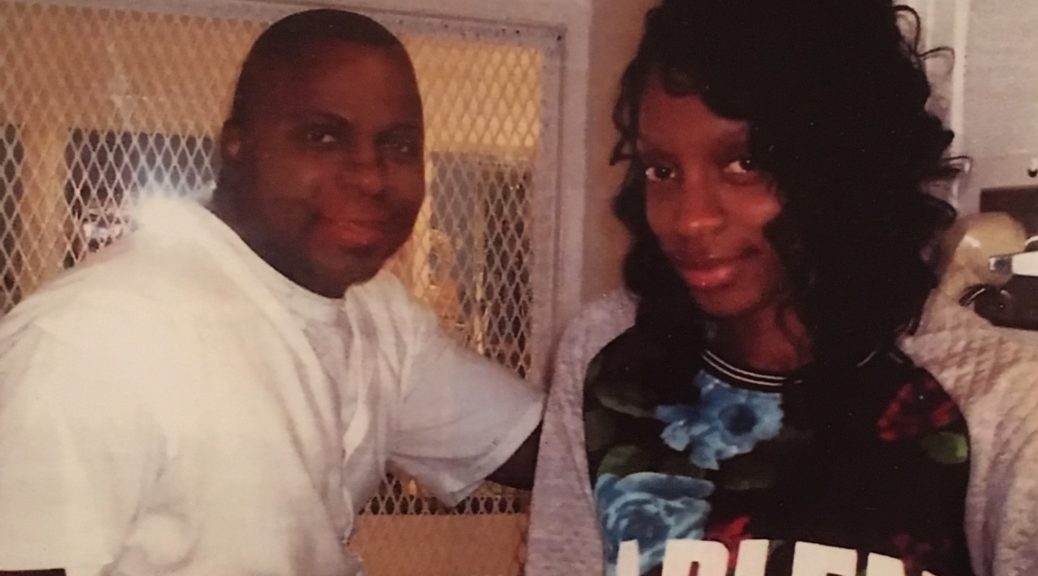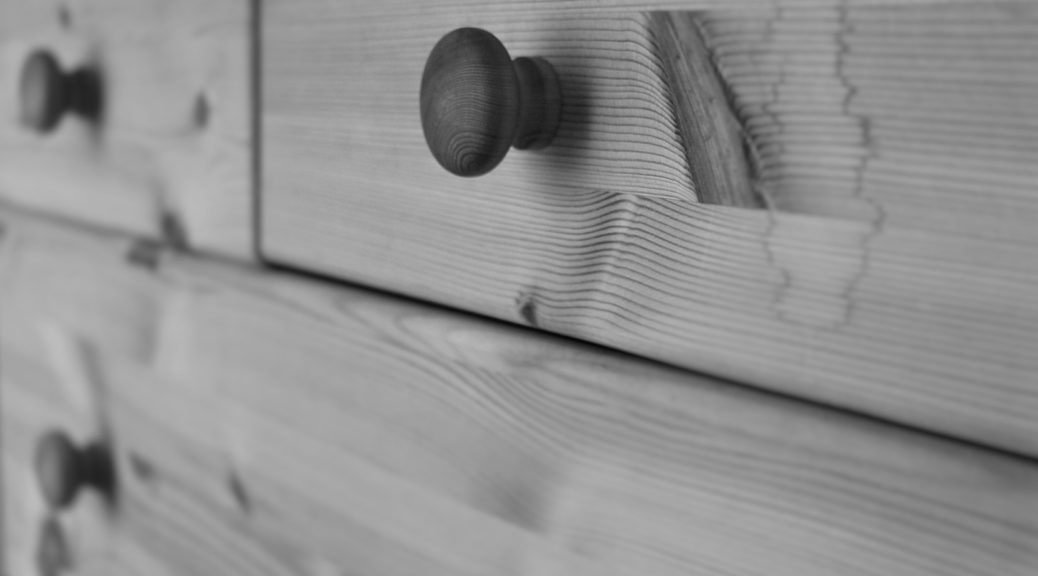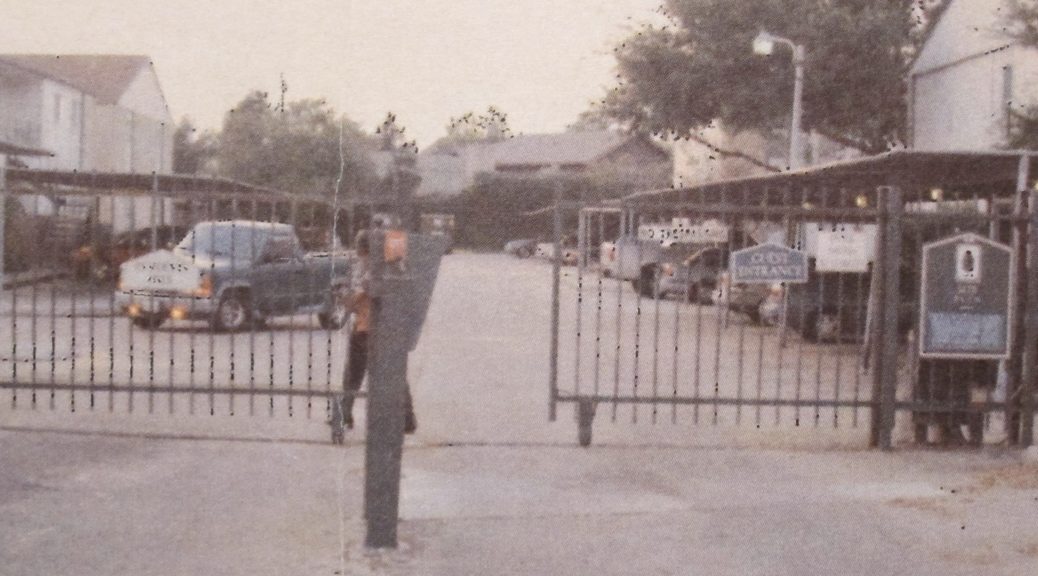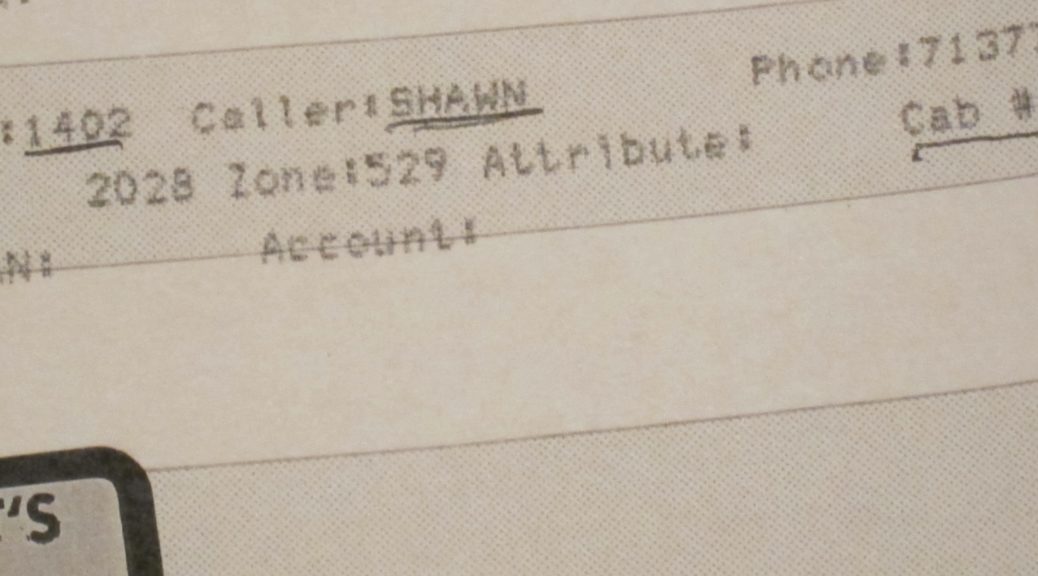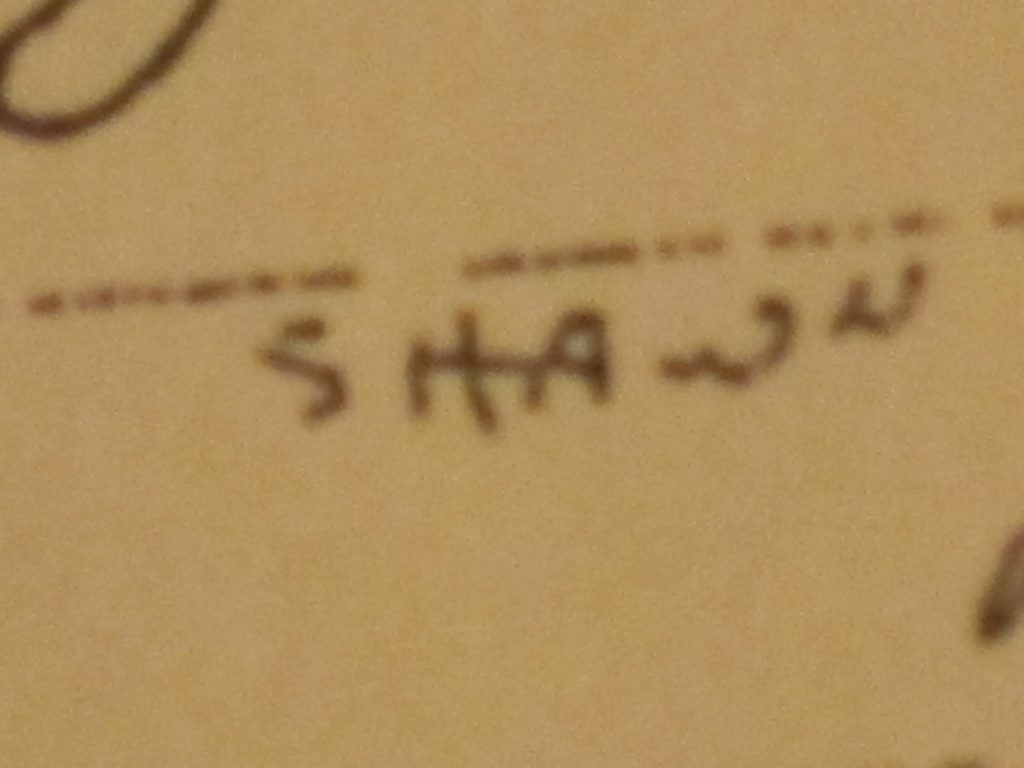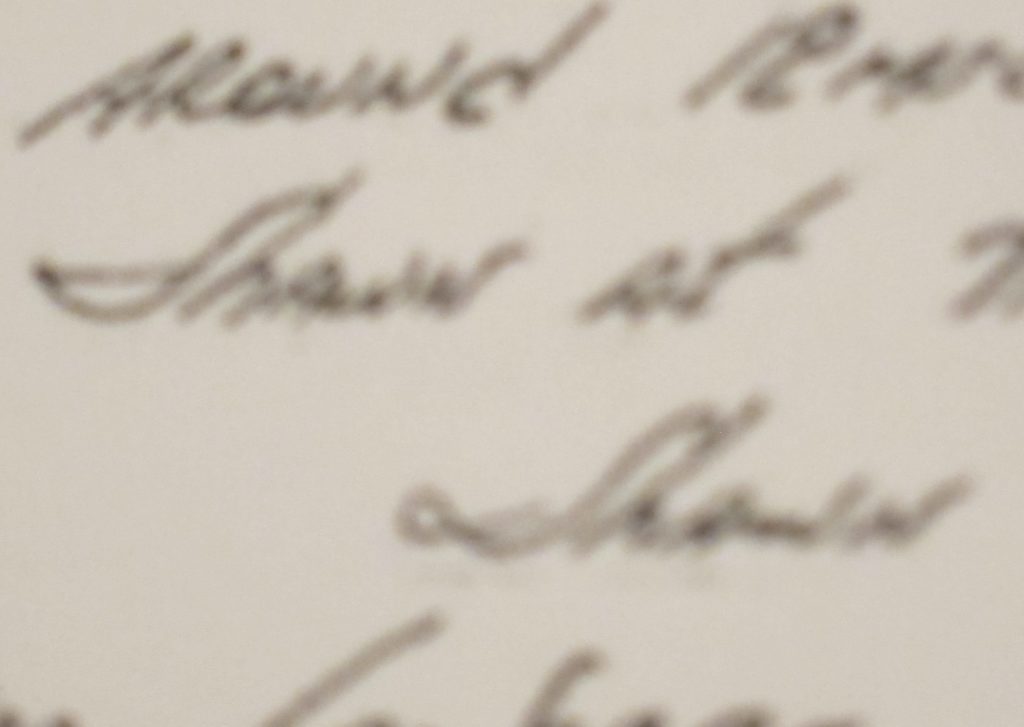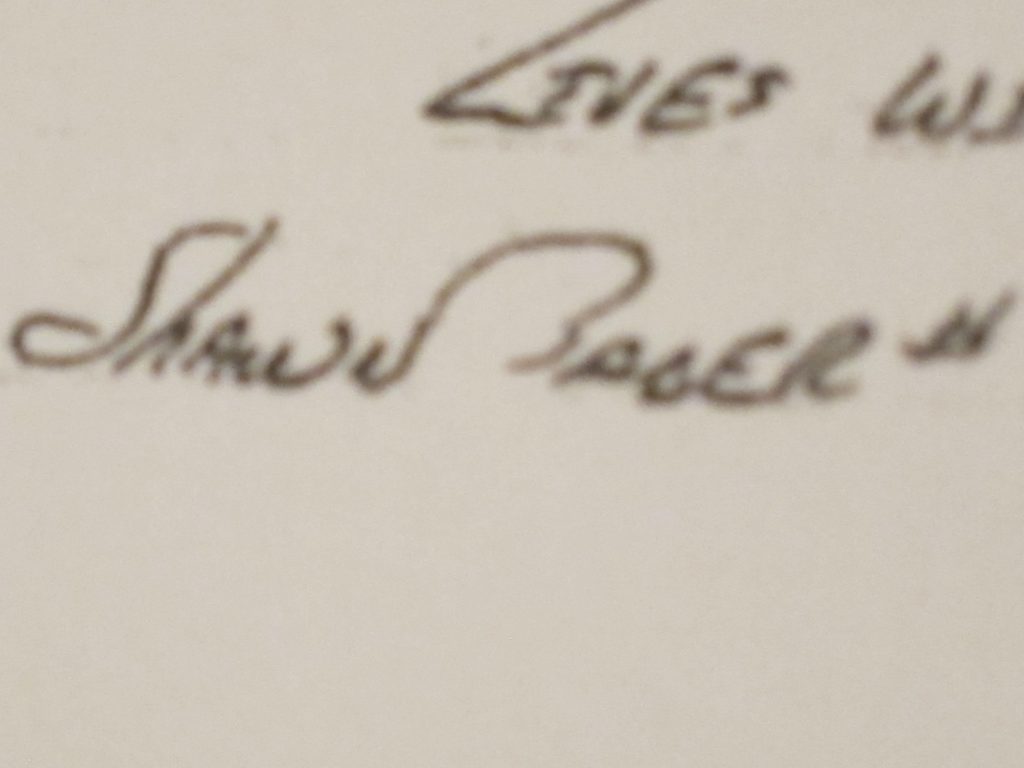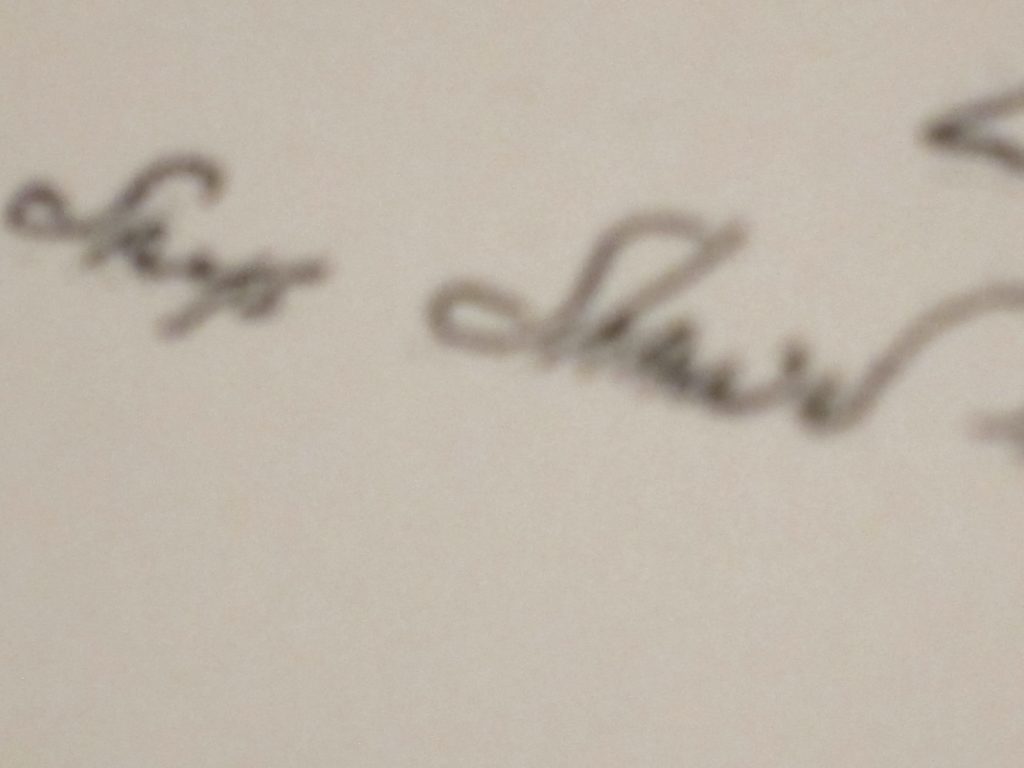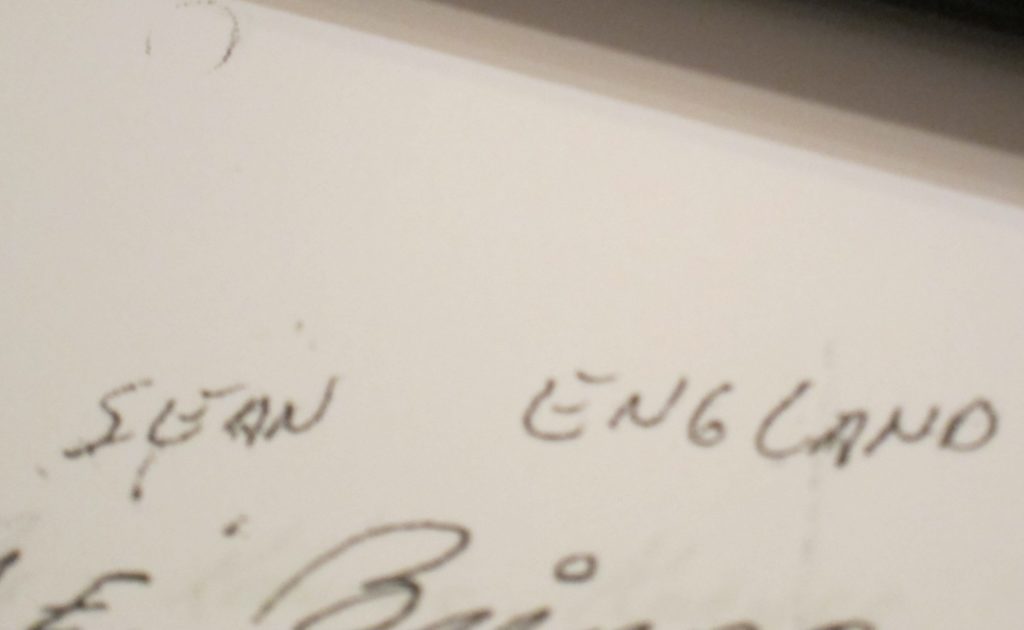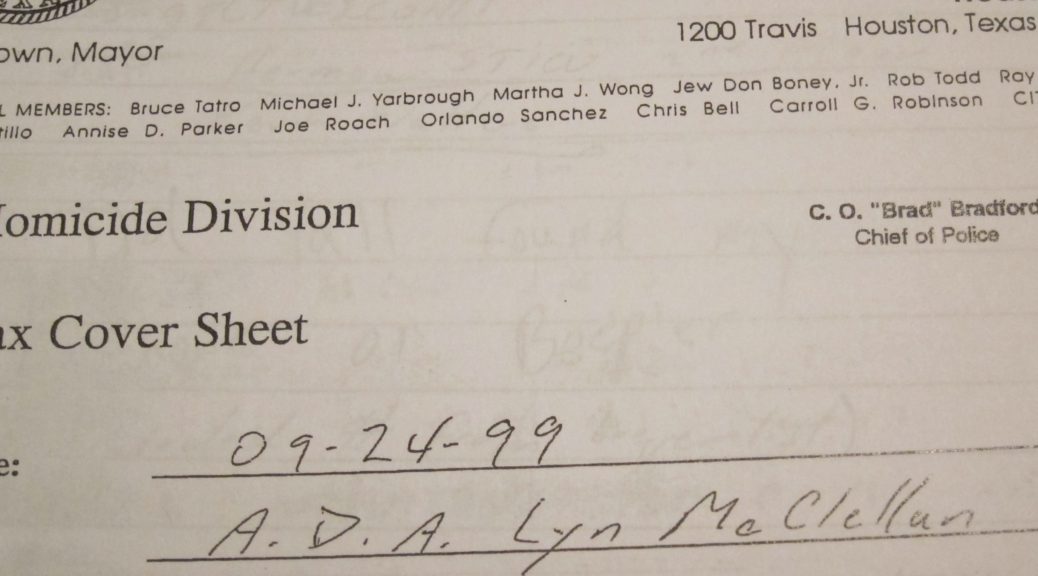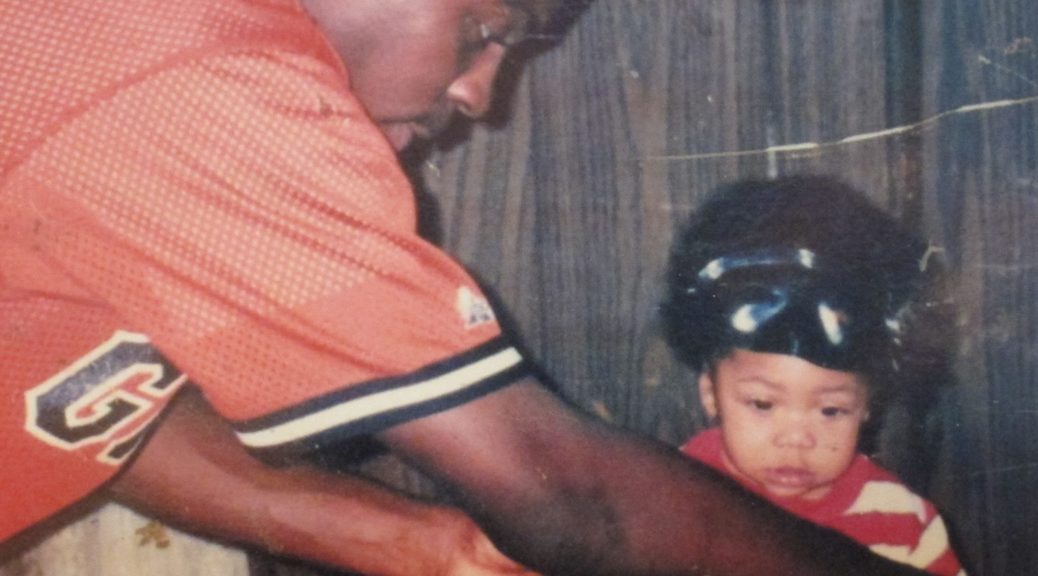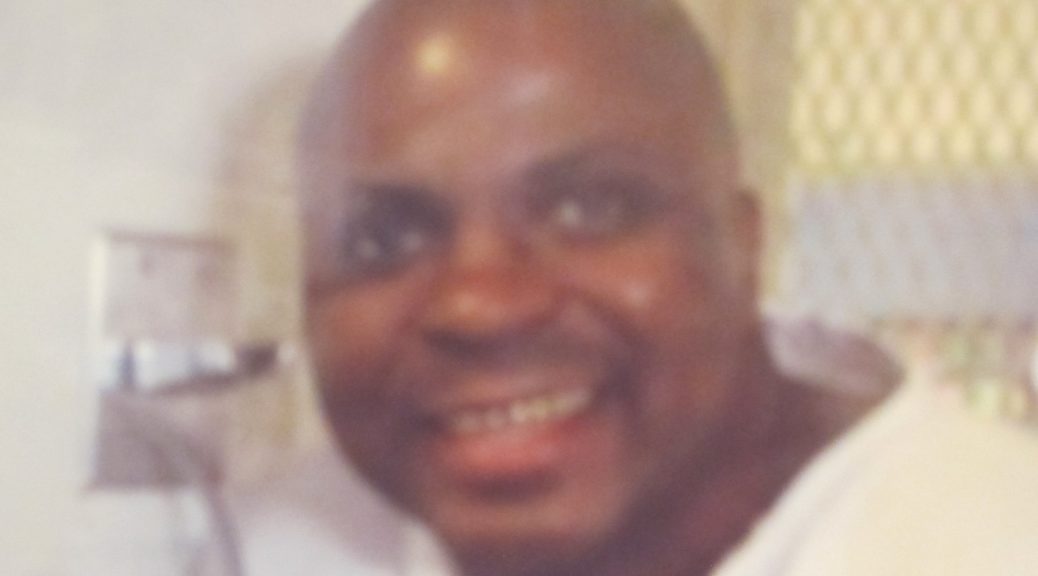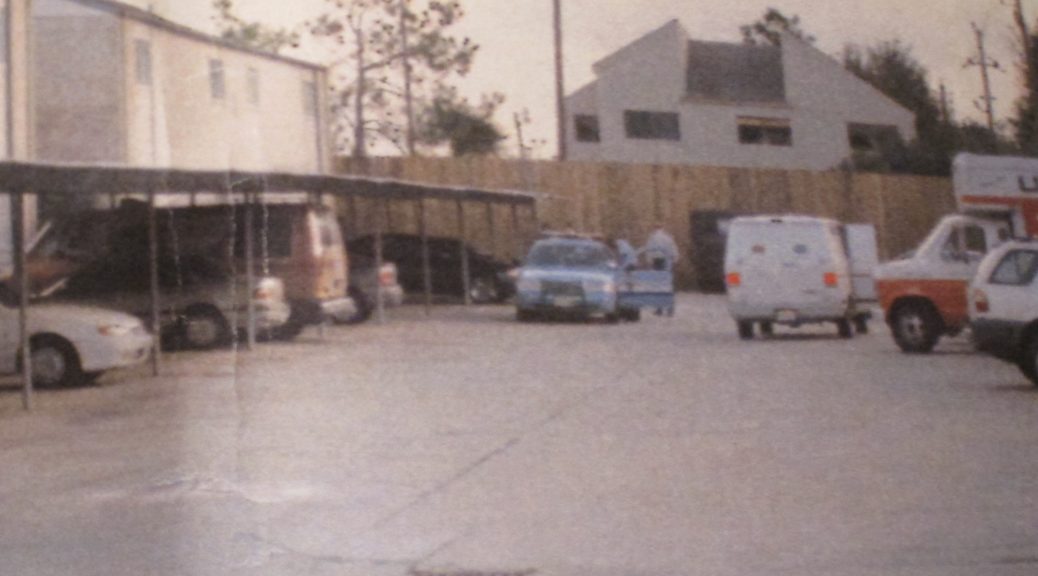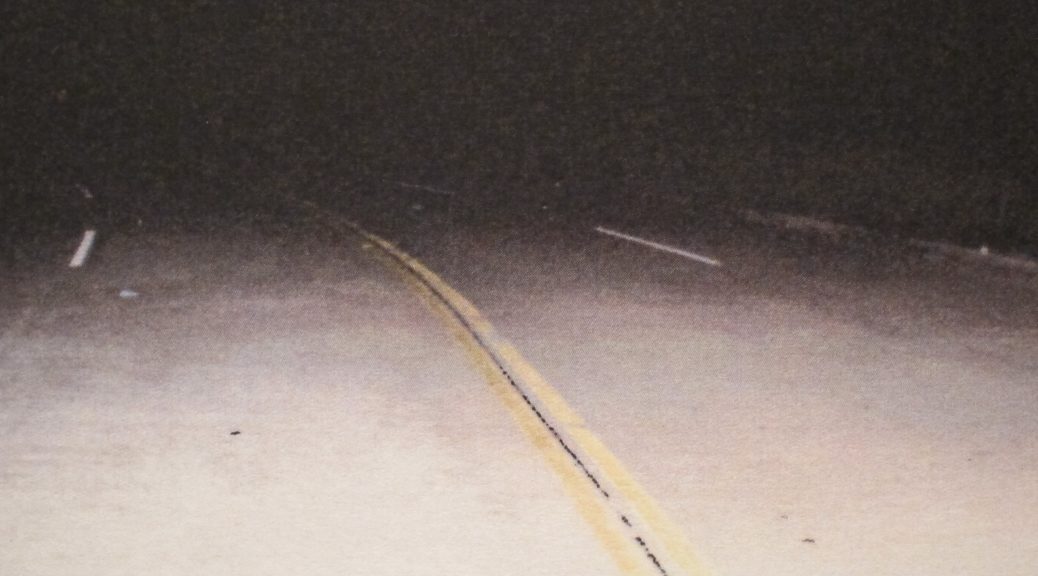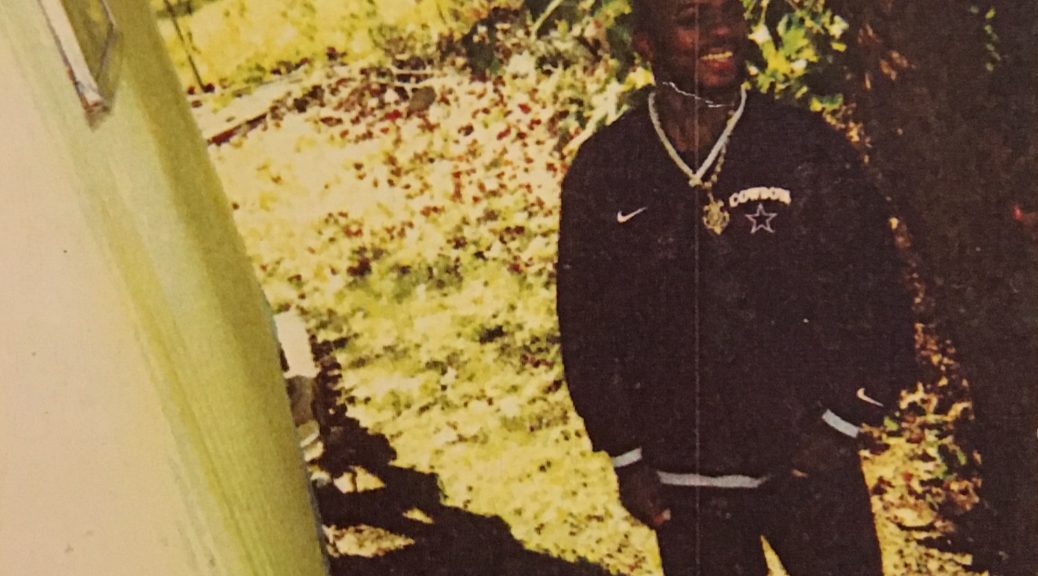Lie, after lie, after lie was heard by the jury in the trial of Charles Mamou.
Q. When you talked to Sergeant Herman from Houston Homicide Department, did you tell him basically what you’ve told us here today?
A. Yes.
That was the testimony of Joseph Melancon – and it was a lie, one of a stream of lies. That lie, as most were, was documented in the HPD case file at the time it was said. The jury was not informed it was a lie.
Here is a portion of the testimony Melancon gave describing what took place on September 5, 1998, three months before the murder Charles Mamou was on trial for. The testimony will be followed by what Melancon actually told police. (Volume 22, of the Reporter’s Record at page 66)
Q . Did ya’ll make arrangements then to get together on Saturday?
A. Yes.
Q. Why were you going to get together on Saturday?
A. It was the Prairie View and Texas Southern game, and we was going to go out.
Q. Did you then meet up with the defendant, Charles Mamou, on that Saturday evening?
A. Yes.
Q. And where did – where did you meet him at?
A. At my house.
Q. What part of town did you live in?
A. Southwest side.
Q. When he came over to your house, how did he get to your house? Do you know?
A. In like a brown Blazer.
Q. Brown Blazer?
A. Like a Durango, something like that.
Q. I didn’t understand that.
A. Chevrolet Durango, one of the little small Blazers.
Q. And was he by himself or with someone?
A. By himself.
Q. And did ya’ll end up then going out that evening?
A. Yes.
Q. About what time, if you know, did you leave?
A. 8:30, 9:00, 9:30, something. Maybe 9:30, 10:00.
Q. All right. And where were you going to go when you left?
A. We was going to Jamaica. It’s a club.
Q. And where is that club located? Do you know what street?
A. On the south side. I don’t know. I don’t remember.
Q. Did you get to the Jamaica Club?
A. No, we didn’t.
Q. What happened on the way to Jamaica Club that prevented you from getting there?
A. Chucky got a phone call on his cell phone.
Q. And do you know who he was talking to?
A. No, I don’t.
Q. You just heard his end of the conversation?
A. Yeah.
Q. What was he saying in the cell phone?
A. He said, You got that for me.
Q. I’m sorry. I want you to back up a little bit from the microphone.
A. Do you have that for me?
Q. What did he say next, if you recall?
A. He hung up.
Q. All right. Where did you end up going?
A. To the little store on Buffalo and West Fuqua.
Q. Buffalo, meaning Buffalo Speedway?
A. Yes.
Q. Now, how many people were in the vehicle you were in?
A. Just me and Chucky.
Q. When you got to the store at Fuqua and Buffalo Speedway, what kind of store was it, do you know?
A. It was like a convenience store.
Q. And was there anything close by the convenience store?
A. It was a club. It was called Shannon’s.
Q. Not the club you were initially going to–
A. No.
Q. –but a different club. What happened when you arrived at the convenience store?
A. They had three guys standing out at the convenience store.
Q. Okay. Did y’all park, or what did you do?
A. We pulled up. And one of the guys came to the car’s front passenger door, and I got out and they got in.
Q. Did you know who that person was?
A. Yes, I did.
Q. And how did you know who – what did you know that person’s name to be?
A. Bruiser.
Q. Did you know him by any other name?
A. No, I didn’t.
At this point, the defense objected, but the objection was overruled. The witness continued to describe that night:
Q. And what did you say the person you’ve identified as Bruiser did when he came to your side of the vehicle you were in?
A. He opened my door.
Q. Okay. And did you get out or did you stay in?
A. I got out.
Q. Where did you go?
A. I went and talked to the two guys that was standing up with him.
Q. And who were the two guys?
A. A guy named Lonnie and Weinerman.
Q. What did Bruiser do after you got out of the vehicle?
A. Him and Chucky was in the vehicle talking.
Q. All right. So did Bruiser get in the vehicle?
A. Yes.
Q. What did you see the defendant, Charles Mamou, do then, the next thing you saw him do?
A. He got out the vehicle and went into the store.
Q. Did you see him come out of the store with anything?
A. Yes.
Q. What did he come out of the store with?
A. Two brown bags. Looked like something to drink was in them.
Q. All right. What did he do after he came out of the store. Where did he go and what did he do?
A. He got in the driver’s seat and drove off.
Q. All right. Did he say anything to you before he drove off?
A. No.
Q. All right. Now the plan had been ya’ll were going to go to Jamaica Club, right?
A. Correct.
Q. Did the defendant say anything about why you weren’t immediately going to Jamaica Club? Did he say what he was going to do first?
A. He said he needed to take care of something.
Q. All right. When he drove off, did you expect him to come back?
A. Yes.
Q. What were you doing then after you saw the defendant and the person you identified as Bruiser drive off in a vehicle driven by the defendant? What were you doing?
A. I was talking to Lonnie and another guy named Weinerman.
Q. And while you were outside the store talking, did you hear anything unusual?
A. Yes.
Q. What did you hear?
A. Sounded like a gunshot.
Q. One or more?
A. One.
Q. After you heard what sounded like a gunshot, did someone come to the location where you were at?
A. Yes.
Q. Do you know who this person was?
A. No.
Q. Without telling me what they said, did they say something?
A. Yes.
Q . As a result of what they said, what did you do, if anything?
A. I got in the car with Lonnie, and we rode over on West Fuqua by the entrance to the Almeda Manor neighborhood, the entrance to that subdivision.
Q. What was there at that location?
A. It was a lot of people around, and Bruiser was laying on the ground.
Q. Now did you get out of the vehicle?
A. Yes, I did.
Q. Did you go to where Bruiser was?
A. Yes, I did.
Q. Did you hear anything Bruiser was saying?
A. Yes, I did.
Q. What was he saying?
A. He said, My boys shot me, and he just kept saying it over and over.
Q. Repeating that same phrase? You need to say yes or no.
A. Yes.
Q. After you saw Bruiser laying there, what did you do?
A. I walked over about two houses down with another friend of mine from the neighborhood and used his phone.
Q. Okay. And who did you call?
A. I called my wife.
Q. What did you ask her to do, if anything?
A. I told her to come get me.
Q. And did she?
A. Yes, sir.
Q. Before you left that scene, did any ambulance or people arrive to tend to Bruiser?
A. Yes.
Joseph Melancon then went on to describe how he was so fearful of Charles Mamou after that night that he fled Houston and moved to Dallas.
When questioned by the defense, he is asked to clarify a couple things.
Q. Now, when he comes over on that Saturday, you said he came over at either 8:30 to 900 or 9:30 to 10:00?
A. Correct.
Q. You don’t recall which. But do you recall at the time he came over your wife was not home?
A. That’s correct.
Q. Your wife was working until what time that night.
A. I think she got off at 9:30 or 10:00.
Q. At some point, do you guys leave?
A. Right.
Q. Does your wife come home?
A. No, I had to bring her the car. We only had one car at the time.
Q. Okay. So did you take the five-month-old with you over to where your wife was working?
A. Right.
Q. So you drive the car over, and you leave your child with your wife. And then you and Charles were going to probably go clubbing at that point?
A. Right.
The attorney asks him again about what happened when he heard the gunshot.
Q. You went to the scene, how did you get from the convenience store to where Bruiser was?
A. I rode with Lonnie.
Q. Okay. So Lonnie had his vehicle there?
A. Correct.
Q. And did Weinerman get in the car with you?
A. No.
And then Melancon was asked about when he originally spoke to police.
Q. When you talked to Sergeant Herman from Houston Homicide Department, did you tell him basically what you’ve told us here today?
A. Yes.
After this testimony, the prosecutor brought in the medical examiner to share graphic photos of Anthony Williams’ autopsy, followed by Anthony Williams’ older sister who described how her brother’s death impacted her family – and Mr. Williams’ seven year old son.
That was all done to convince the jury that Charles Mamou had killed Mary Carmouche, but he was not on trial for the murder of Anthony Williams. I challenge anyone to look at that testimony and what police and the D.A. knew at the time and not recognize the lengths that were gone to in an effort to secure a death sentence.
This is what police actually knew at that time.
- Officers on duty that night received the call at 10:01 P.M. on September 5, 1998, from dispatch regarding the shooting.
- After this incident took place, Joseph Malencon began telling people his childhood acquaintance, Charles Mamou, had murdered Anthony Williams.
- Investigators looked into Malencon’s allegations early on and didn’t pursue them. Charles Mamou had been with two women in Louisiana that weekend, which also happened to be the weekend of a family wedding. Mamou didn’t attend the wedding itself, but he did see his family that weekend in addition to staying with the two women in a hotel in Louisiana.
- The following is what Malencon originally told police – which doesn’t even closely resemble his testimony:
On the night of this incident he was at his residence. Melancon stated the possible suspect, Chucky Mamou, called him and came and picked him up and they went to the Shannon’s Club on Buffalo Speedway and Fuqua (he testified in detail about them going to a convenience store). Joseph Melancon stated that was around 11:00 PM (an hour after the shooting took place).
Joseph Melancon then stated, just after he and Chucky Mamou arrived in the club, Chucky Mamou met Anthony Williams and they started talking. (in his testimony – they were never in a club) Joseph Melancon stated, in a short while Chucky Mamou came and told him he had to do some business, and at that time Chucky Mamou and the victim left the Shannon’s Club (again, in his tesimony, they were never in a club).
Joseph Melancon stated he remained at the Shannons’s Club and he was visiting with a man called Weinerman and also a man named Lonnie. Joseph Melancon stated while they were talking someone came up and told Weinerman that the victim had been shot (in his testimony he was outside a convenience story and heard a gunshot).
That statement is a completely different story then Melancon’s sworn testimony. The jury never heard this statement, and Mamou never saw it for over twenty years. - Sergeant Novak reopened this case on September 20, 1999, in an effort to help the District Attorney secure a guilty verdict in the case against Charles Mamou for the murder of Mary Carmouche. None of the information they were able to gather supported Melancon’s original statement, and no one could identify Charles Mamou as being involved – outside of various stories they had heard from Joseph Melancon. Sgt. Novak was an experienced detective, not fresh to the Houston Police Department. He saw exactly what I saw when he Iooked at the file.
- The few witness accounts that support each other – were those shared by individuals first on the scene. One of those individuals told police he ran into Shannon’s Club to get help and located Weinerman inside, along with Lonnie – the man Joseph Melancon testified drove him to the scene of the shooting after they both heard a shot outside at the convenience store. Lonnie was not outside the convenience store – he was inside Shannon’s Club according to the witness.
- One of the central witnesses to this case and a man everyone saw that night was interviewed by police. He stated that Bruiser was hungry and he went to Shannon’s and ordered a hamburger. He stated that he and Bruiser went into the club, and shortly thereafter Joey entered the club. He stated that Joey was dressed up in a crisp white shirt like he was clubbing. He stated that Joey went over to Bruiser and they spoke out of his hearing and that Joey left the club and Bruiser and Lonnie followed. The witness continues and stated – “A short time later Cedric came running in and told him that Bruiser had been shot.”
That statement mirrors what the first witness on the scene told police. - The above witness, as well as witnesses on the scene all agree the only words Bruiser said were, “My homeboy did this.”
Charles Mamou was not Anthony Williams’ ‘homeboy’. They didn’t know each other, and on the night in question, Mamou was with two women, and his family was celebrating a wedding in Louisiana.
Joseph Melancon, on the other hand, was a friend of Bruiser’s. One of the witnesses that night told police, “Joey may have something to do with Bruiser’s death.” - Joe Malbrough, a cousin of Joseph Malencon, told police an even different version of what Joseph Melancon told him, telling police that Joey told him he was standing outside the convenience store when he heard gunshots and he took off running. That version of events contradicts Malencon’s own statement which had him inside the club, someone coming in to tell him about the shooting, and getting in a vehicle and driving to the victim… It also contradicts his original statement which had him outside a convenience store, hearing a gunshot and getting in a vehicle with a friend and driving towards the victim.
- There was evidence Charles Mamou was with two women on the night in question – as well as seen in Lousiana that weekend.
What’s clear – a girl was murdered after a drug deal gone wrong in December, 1998, and it was decided Charles Mamou was going to be the one to pay the price. It didn’t matter what police knew.
This series of posts have covered a good part of this case. The picture the prosecution painted of Charles Mamou – “vicious”, “ruthless”, “cold-blooded”, “manipulative”, “liar”, “controlling”. The jury was told, “His comfort zones are guns and bloodshed and murder.” “It’s only a question of when the next victim will be.” “He devastated and destroyed. And that’s all he’s ever done, with his drugs, with his guns.”
The jury heard, “Premeditation to the max,” even though the drug dealers present that night testified they were actually on that alley to rob Mamou at gunpoint. The prosecutor at one point saying, “You could examine every piece of evidence…”
Therein lies the problem. The jury didn’t have access to all that McClellan and HPD knew. Neither did Charles Mamou. I have no idea what Mamou’s court appointed defense attorney was doing, he’s never responded to any requests I’ve made to talk.
Previously shared on this site regarding this case:
-The key witness for the prosecution – testified Charles Mamou confessed to him after he found out police where looking for him in connection to murder. That witness’ testimony became the outline for the case, even though the confession couldn’t have taken place the way the witness described in his original video statement. His actual trial testimony was different than his original statement, including how the alleged confession took place.
–A critical witness’ first written statement to police is not in the police file.
-The prosecution repeatedly accused Mamou of sexually assaulting the victim, forcing her to perform oral sex – all the while knowing that a rape kit had been collected. The D.A. requested the rape kit be processed prior to the trial, and it indicated ‘no semen was found’ – but Charles Mamou never knew a rape kit even existed, so could not use this to defend himself.
-The D.A. learned from the rape kit results that ‘hairs’ and ‘trace evidence’ existed that were collected from the victim, but Mamou never knew this and never had an opportunity to pursue testing that evidence.
-The D.A. had records that the ‘driver’ that night did not go home and go to sleep as he testified, and Mamou did not have that information. The prosecution did not share the information with the jury.
-The D.A. had phone records that would have supported Mamou’s version of what took place that night with regard to Shawn Eaglin, who was described by investigators as a ‘potential suspect’, but they did not share that information with the jury or Mamou.
-As the prosecution listened to Howard Scott testify regarding not getting any more phone calls that night – they knew he had because they had his caller I.D. records, but neither the jury, nor Mamou, was informed.
-It appeared the prosecution was trying to make Mamou sound foolish with regard to his assertion that he saw a man on a bike in the parking lot when he pulled into the apartment complex. All the while they had phone records that indicate someone had called Howard Scott’s apartment that night. And that somebody was actually associated in some way – with the guy on the bike. Mamou nor the jury was given this information.
Nobody has to believe Charles Mamou, who has maintained his innocence from day one. One only needs to look in the case file and see what HPD and the prosecution knew. Unfortunately, knowing what happened doesn’t ‘undo’ what was done. Charles Mamou has lived on Death Row in Texas for over two decades and awaits a date for his execution.
Anyone with information regarding this case can contact me at kimberleycarter@verizon.net. Anything you share with me will be confidential.
All related posts detailing all I have learned over the last two years are available at Charles Mamou.
TO
CONTACT CHARLES MAMOU:
Charles Mamou #999333
Polunsky Unit 12-CD-53
3872 South FM 350
Livingston, TX 77351
![]()
